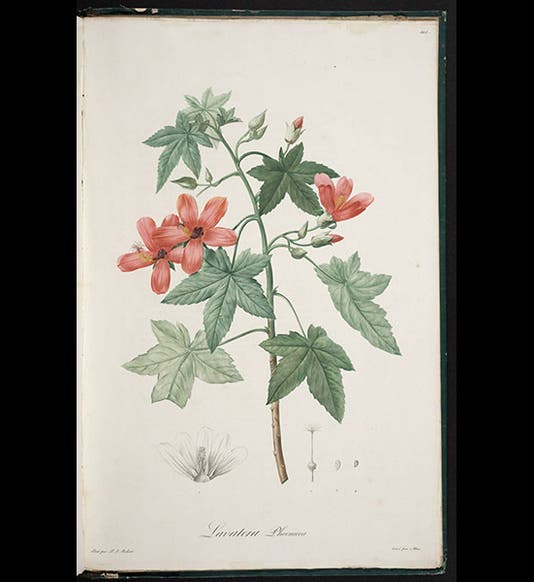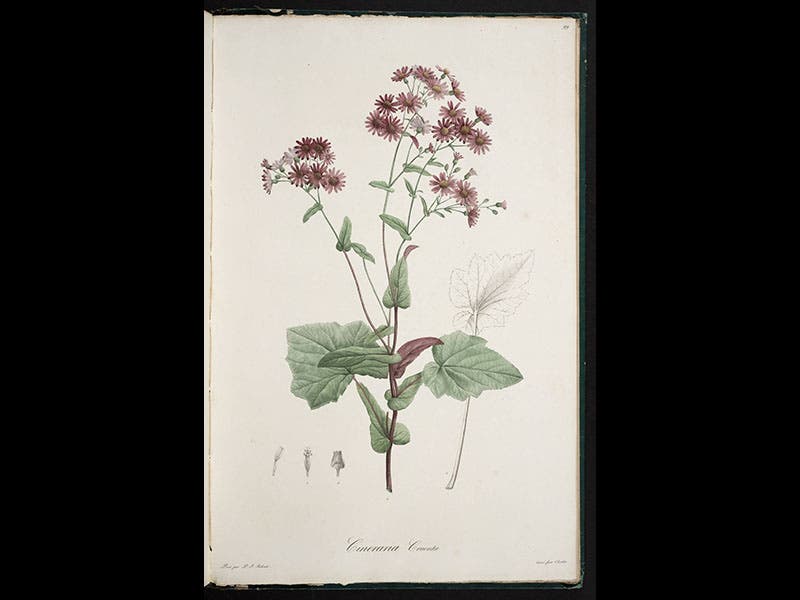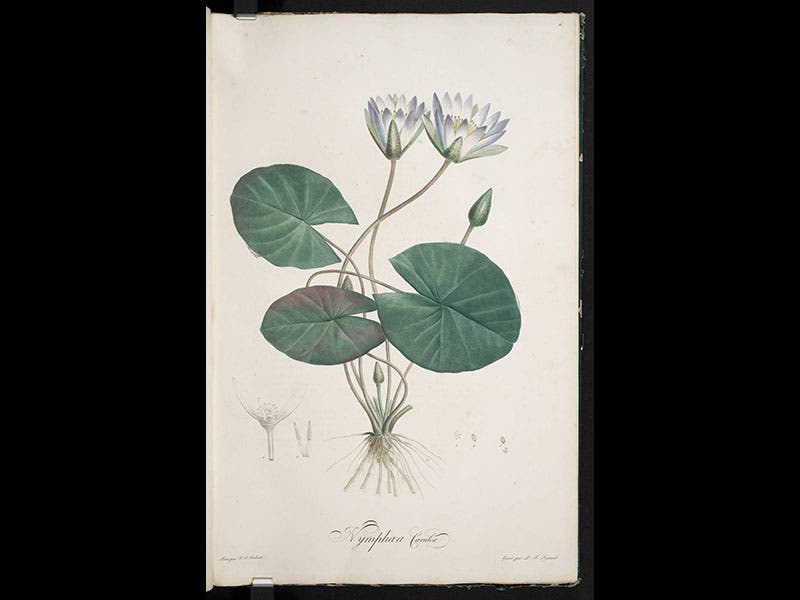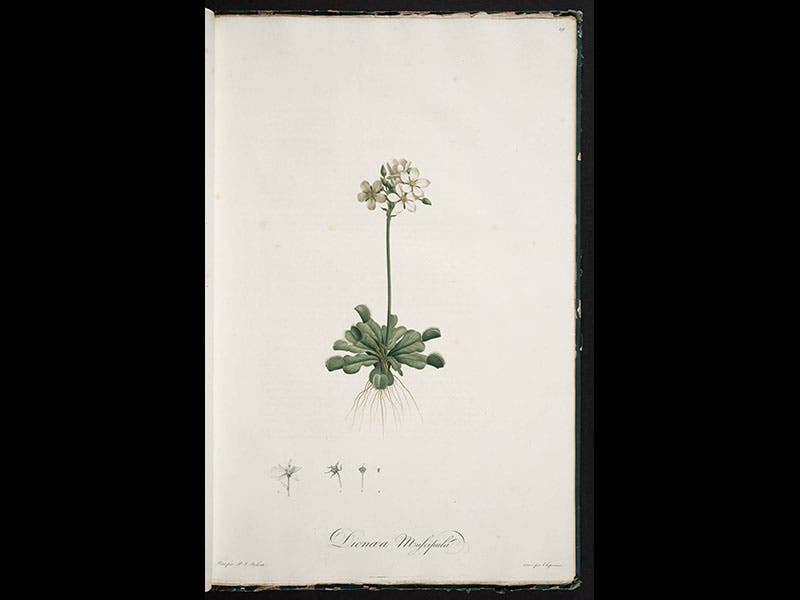Scientist of the Day - Pierre-Joseph Redouté
Pierre-Joseph Redouté, a Belgian artist, died June 20, 1840, at the age of 80. Redouté was one of the most skilled flower painters of his day, and he came to the notice of Josephine de Beauharnais, Napoleon’s first wife, who had one of the most famous flower gardens of the time at her estate at Malmaison, just outside Paris. Redouté was called upon to paint these flowers, and the resulting publications are some of the most highly sought flora on the market. His book Les Roses (1817-24) is probably his best-known production; we do not have that work in the Library. But we do own his first book depicting Josephine’s flowers, Jardin de la Malmaison (1803-4), written by Etienne Ventenat, with exquisite plates by Redouté. Many of the plants in the garden, and in the book, were exotic species, brought back by French voyagers to Australia and the Far East, although the lovely Lavatera phoenicea (first image) came from Teneriffe in the Canary Islands, but it is found no other place in the world, and is very much endangered.
The other plates above depict Cineraria cruenta (Pericallis; second image), Nymphaea caerulea, (Blue Egyptian water lily; third image), Dionaea muscipula (Venus fly-trap; fourth image), and Platylobium formosum (Handsome flat-pea; fifth image).
Dr. William B. Ashworth, Jr., Consultant for the History of Science, Linda Hall Library and Associate Professor, Department of History, University of Missouri-Kansas City. Comments or corrections are welcome; please direct to ashworthw@umkc.edu.











